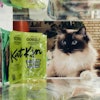While natural products continue to drive sales growth for both the human food and pet food markets, sales of organic products tell a different story. Research from Mintel, “Organic Food and Beverage Shoppers-US” (March 2015), shows that only 33% of US consumers overall reported buying a food or beverage labeled as organic in the previous three months. On the pet side, only 4% of US households with pets purchased organic pet food in 2014, according to Experian Marketing Services, as reported by Packaged Facts in its “Pet Food in the US, 11th Edition” (September 2014).
With so much consumer concern about buying healthy food products for themselves and their families (furry or otherwise), knowing the sources of the products they buy and the ingredients within them, you would think organic products would be more popular now. But at least with human food, more than half of US consumers—51%—believe that labeling a product organic is an excuse for the manufacturer or marketer to charge more, Mintel’s research shows. This is especially true for Generation X (born 1966 to 1988) and Swing Generation (born 1927-1945) consumers, who seem to equate an organic label with a premium price at 51% and 57%, respectively.
What’s more, there seems to be an inherent distrust of organic labels, according to Mintel, with only 39% of Gen X-ers and 35% of Swing Generation consumers believing that products labeled organic are actually so. Even with Millennials, the consumer group most likely to buy organic foods or beverages (at 42%), just one in four realizes that organic products are regulated. Overall, 38% of US consumers “regard ‘organic’ as a marketing term with no real value or definition,” Mintel says.
“Consumers are confused when shopping for organics due to the large selection, confusion over natural versus organic claims and limited regulation of the term ‘natural,’” added Billy Roberts, senior food and drink analyst at Mintel. “Our research shows that only 29% of shoppers recognize that organic foods and beverages are highly regulated.”
So, why do even 33% of US shoppers overall buy organic foods and beverages for humans? Mainly because they still believe such products are healthier or more nutritious, with 72% who purchase organics giving that reason, followed by 69% who buy organic for environmental or ethical reasons. Women especially, at 43%, are more likely to purchase organic products because of what they are perceived not to contain, such as unnecessary ingredients, chemicals or any pesticides. Finally, 31% of female and 29% of male consumers believe organics are less processed than non-organic products, while 20% of women and 16% of men believe companies offering organic products treat animals more ethically.
Organic pet food sales rates still low
Given that backdrop and the fact that most pet owners in the US regard their pets as full-fledged family members, it’s still somewhat surprising that sales of organic pet foods are not higher. Packaged Facts doesn’t seem to separate out organic sales from the overall “natural and organic pet food” category, which reached US$7.3 billion in 2014 (and is expected to grow 14.6% annually through 2019). Yet that 4% organic purchase rate among US pet-owning households is telling.
The rate does rise to 9.8% for pet owners who buy organic pet food online and 8.8% for those who shop in independent pet stores. For Petco and PetSmart, organic pet foods are bought at a 7.1% and 5.6% rate, respectively, Packaged Facts says, with organic purchases at veterinary clinics not far behind, surprisingly, at 5.3%. The rate falls to 4.8% at discount stores and 2.4% at supermarkets.
Sussing out potential reasons behind lower rates of organic pet food buying is difficult. Again, Packaged Facts’ pet owner surveys tend to combine natural and organic pet food into one category. For example, 45% of US pet owners now agree that “natural/organic brand pet products are often better than standard national brand products,” up from 38% in 2012. And 41% of dog product buyers and 38% of cat product purchasers agree that “if natural/organicpet products were more available where I shop, I would buy them more often.”
But the real reason, as with organic products for human, likely lies with the price of organic pet foods. According to Packaged Facts, 47% of dog product purchasers and 48% of cat product purchasers agree that “if natural/organic pet products were more affordable where I shop, I would buy them more often.” That pet owners seem a little more willing to buy organic pet treats—2015 research from Packaged Facts shows 21% of dog owners and 15% of cat owners have bought treats labeled organic—supports that sentiment, as owners are more likely to splurge on the occasional, higher-priced treat.
If companies offering organic pet food could figure out a way to bring them to market at a lower price point—and yes, that is a big “if”—consumers would no doubt respond, especially younger ones. Mintel’s research indicates that 49% of Millennials buy organic for at least half of their food and beverage purchases, and 20% say organics comprise at least 75% of those purchases. Meanwhile, Millennials are overtaking Baby Boomers as the largest group of pet owners, according to some sources.
Discounting organic pet food may be another option; Packaged Facts reports that 9% of dog owners and 11% of cat owners have used coupons when buying organic pet food. Would that rate be higher if more coupons were offered?
“Considering the typically higher cost of organic foods and beverages, consumers are increasingly hard pressed to justify the added expense,” said Roberts of Mintel. “As such, sales have hit something of a plateau, where they likely will remain until consumers have a clear reason to turn to organics. This could come in the form of a growing number of lower-cost organic options, bringing a new degree of competition to the category.”


















